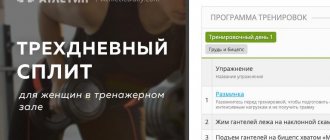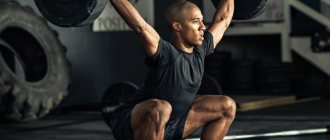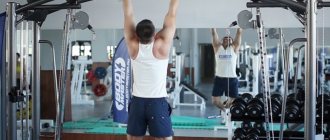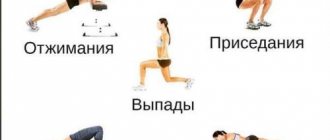Share: |
|
|
Functional training gives you every opportunity to get an attractive, physically developed body. The program helps increase mobility, flexibility, and helps prevent household injuries. The effectiveness of exercise does not depend on where you practice. Even alone, in an apartment you can achieve excellent results. This does not require complex equipment; simple devices are sufficient. The exercises are often performed with your own body weight.
The program includes exercises for different muscle groups, you can perform them to rhythmic music. Functional fitness is extremely diverse in terms of load range and selection of exercises. These include squats, deadlifts, push-ups, and pull-ups. Movements are performed in different planes. The system also includes various jumps, lunges, and planks.
Exercises are combined into several cycles to increase endurance. The classes are easy to diversify and complicate. To do this, use a horizontal bar and parallel bars, elements with a barbell, weights, and cardio equipment.
Recommendations from trainers
Many people say that functionality in sports does not give the desired results. Most people in the country want to have a slim, beautiful figure and lead a healthy lifestyle. Of course, daily activities do not involve lifting heavy objects, quickly running up the stairs to the 30th floor, and similar activities. But functional training develops a lot of other internal qualities, such as willpower, endurance, and flexibility.
Therefore, most professional trainers recommend:
- Look at things realistically. Physical fitness must be at its best; you must be able to control your body, which will prevent unnecessary injuries.
- The benefits of training directly depend on your sleep and wakefulness patterns. You need to get 7-9 hours of sleep every day. On weekends and Sundays, you should relax like a real professional athlete: visiting a sauna, steam baths, massage.
- Eat properly. Doesn't mean you have to stick to a strict diet. It is enough to eat small portions 5 times a day and make small fruit snacks. You need to eat foods that are easily digestible so that muscle mass does not “overgrow” with layers of fat.
- Monitor the general physical condition and its development: blood pressure, hormones, various inflammatory processes, injuries.
Qualified practicing trainers strongly recommend that anyone who decides to engage in functional training go to the fitness room where classes are taught by a good specialist. If a trainer suggested steroids, anabolic steroids or any other dietary supplements for muscle growth, this is no longer an expert in functional training.
Features of functional training
The first and most important feature of functional training that deserves attention is its versatility. People of absolutely different ages can engage in functional training, from schoolchildren to retirees. The fact is that at every age our body requires increased care, and the sooner you start preparing it for upcoming difficulties, the easier it will be to cope with them in the future. People who regularly exercise find it much easier to perform any physical activity, including everyday ones. In addition, the exercises included in the functional training complex do not require any special sports training, so everyone can do it. This is another reason why functional training is becoming more popular every day.
The next feature of functional training is its accessibility. If most sports involve movements and manipulations with heavy weights that are unnatural for our body, then functional training is based on completely opposite principles. First of all, absolutely all the exercises included in the training complex completely repeat the normal movements of our body, which we do, if not daily, then quite often. Therefore, you don’t have to put in a lot of effort to complete them. As for weight, basically, in the process of functional training, the weight of our own body is used, or small additional weights that we may encounter in everyday life. This helps not only develop muscles, but also strengthen them, preparing them for mandatory tasks. Such training not only helps to increase strength and endurance, but also improves flexibility, coordination, and balance.
Another feature and distinctive feature of functional training is its variability. Due to the fact that during training you need to perform movements that are as simple and natural for the body as possible, their number can be so large that each new workout will consist of unique and non-repetitive complexes that involve different muscle groups and gradually strengthen them. Thus, anyone can engage in functional training, not only in the gym, but also at home, having previously studied the rules and recommendations that should be followed during any physical activity in order to avoid unwanted injuries.
Difference from regular exercises
The main difference from conventional strength training is the presence of exercises that maximally imitate the natural movements of the musculoskeletal system.
An even load on all muscle groups allows you to effectively burn excess calories and strengthen the main muscle groups and skeletal system. Your body does not experience unnecessary tension in the joints and muscles, which can significantly reduce the likelihood of injury. Circular training, unlike regular training, does not involve exercises in which the muscles take unnatural positions during physical activity.
Functional training can be carried out either as a separate session or as an addition to the main strength training. Complication occurs not due to an increase in the weight lifted, but through more complex exercises that require the athlete to have certain initial training. Instructors actively use functional exercises that involve your own body weight. Often training involves exercise machines with a free trajectory of movement.
Features of functional training include the frequent use of sports equipment with balancing equipment. For example, trampoline exercises allow you to work a large number of muscles, including deep postural muscles, which are almost impossible to use on conventional machines. Maintaining balance on an unstable surface uses a lot of energy without putting too much stress on your joints. The simulator is designed in such a way that the surface, which provides an unstable surface, takes on part of the impact load, allowing you to avoid straining your joints.
The high effectiveness of training depends on the variety of exercises performed. To ensure the required set of functional loads, the room in which you plan to conduct training must be equipped with the necessary exercise equipment. The more there are, the more you can diversify your classes and, accordingly, increase their effectiveness. Modern exercise machines provide the correct biomechanics of the exercise, which also allows you to achieve quick results.
Doctors recommend functional training as the best option for rehabilitation and recovery. Individually designed workouts with the participation of an instructor and attending physician allow you to achieve quick results. The combination of various types of functional loads on the main muscles of the musculoskeletal system can significantly speed up the process of restoring motor activity.
Fitness tour: what is it and what are its advantages?
If you don’t yet know what such a journey is, it’s time to correct this annoying misunderstanding! Believe me, you missed a sea of positive impressions and wonderful moments. By going on a fitness tour, you will explore new horizons, expand your horizons, meet “kindred spirits,” get to know yourself better and do the most good for your body. In a word, if you decide to take this trip for the first time, you will very quickly make up for lost time!
Active recreation areas are very diverse: they can cover several sports at once or, on the contrary, be narrowly focused. For example, those people who practice yoga professionally will not be interested in a dance tour, and vice versa. A fitness tour means the departure of a group of people led by a professional trainer to another country or to the Russian resorts of the Black Sea, where they will not only swim, relax, visit new places, but also restore their health according to a pre-developed program. The times when a passive beach holiday at sea caused frantic excitement are irrevocably a thing of the past...
You may object that training can be done in a hotel or at home, that is, you can relax as usual and still exercise. But the point is that a fitness tour is not just an active holiday - it is a reassessment of values that allows you to at least get closer to a healthy lifestyle. A person has an excellent opportunity to adjust his diet, which under normal conditions often lacks “willpower”: professional trainers will not give you the opportunity to slack off or skip a lesson, they will point out mistakes in time and provide moral support. In addition, you will undergo special psychological training that will help you eliminate traces of stress, get out of depression, or simply find harmony with yourself and the world around you. The program of any fitness tour is always thought out to the smallest detail, systematic, effective and consistent: it is extremely difficult to implement it alone, or rather almost impossible. What is the value of “team spirit” alone! The temptation to sleep through morning procedures in the fresh air will disappear very quickly: even if you miss classes once or twice, you yourself will later regret it.
Thus, the main advantage of a fitness tour is a positive atmosphere. You will find like-minded people, that is, you will communicate with people who have the same interests as you. You will make new friends, fresh impressions. You will combine business with pleasure: see new countries, relax, do what you love, lose extra pounds and benefit your body.
Fitness classes for weight loss: at home or in the gym?
Those who already lead an active lifestyle often do exercise at home. It’s comfortable, convenient and cheap, but only those people who have extensive experience in sports and are ready to force themselves to train should practice this way. Home exercises are suitable for weight loss, and are often combined with diets, but the main thing here is not to overdo it.
Beginners who are lost in doubt and don’t know where to do fitness are recommended to go to the gym for the first time. The advantage of group classes is that a person can see the result of similar work of his colleagues. There is also a trainer in the gym who helps athletes exercise, increase loads and achieve the desired goal. Only in such an atmosphere will it be possible to fully experience what fitness is all about. Photos of many gym clients often end up on the official websites of fitness clubs.
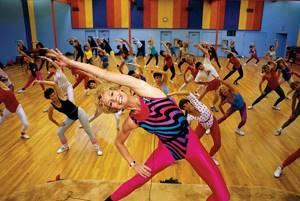
Functional training for weight loss
The program is suitable for losing weight and speeding up metabolism. Functional fitness training promotes active fat burning; it is one of the most effective methods for increasing muscle mass and reducing fat percentage. Many calories are burned during and after high-tempo workouts involving different muscle groups. You can combine exercise with taking L-carnitine, a sports nutrition that stimulates fat burning.
To achieve sustainable weight loss, you need to exercise at least every other day. It is advisable to organize your diet properly and eat more protein foods. If you train irregularly and for less than 30 minutes, you should not expect sustainable results.
What is this
Functional training is a training session aimed at teaching the simplest motor movements, developing physical qualities, and improving the physique.
These workouts should be tailored to your fitness level. In addition, before starting a training session, you should definitely consult your doctor. You should not force physical activity, as this can lead to bad consequences.
Initially, these training sessions were used only by professional athletes. A couple of years ago they began to be actively introduced into the program of fitness clubs.
The predecessor of this training was Pilates. It was proposed to perform the standard abdominal crunch slowly, as a result of which the stabilizer muscles, which are responsible for posture, were activated. Even experienced bodybuilders are exhausted at first from such non-standard physical activity.
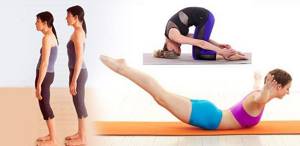
The point of the training is to practice body movements necessary in standard life: sitting at a table or in a chair, jumping over puddles, lifting and holding weights in your hands, etc. This helps improve the strength of the muscles involved in the implementation of these body movements. The simulators allow you to perform body movements not along a fixed trajectory, as with standard equipment, but along a free one. As a result, the muscles move and function as they do in life. Such exercises are extremely effective. The main feature is that when performing functional physical exercises, all muscle groups without exception are activated, including deep ones, which are responsible for the stability of our body movements. This training makes it possible to successfully develop all basic physical qualities. Functional training allows you to achieve harmonious development of the whole body.
The proposed training is so highly effective that it was included in a special physical training program for military personnel. But this does not mean that it cannot be performed by girls in the gym or at home.
Functional training[edit | edit code]
Do not confuse this fitness program with the section of sports training that has a similar name, functional training.
Functional training
– training aimed at teaching motor actions, developing physical qualities (strength, endurance, flexibility, speed and coordination abilities) and their combinations, improving physique, etc. that is, what can fall under the definition of “good physical condition”, “good physical shape”, “athletic appearance”. (E.B. Myakinchenko)
It should be noted that “functional training” classes should be adequate to your state of health and level of physical fitness. It is also necessary to consult a doctor before starting training. And always remember - forcing the load leads to negative consequences for the body.
This is a fundamentally new stage in the development of fitness, offering ample opportunities for training. The pioneers of the development of this trend in fitness in our country were trainers Andrei Zhukov and Anton Feoktistov.
httpv://www.youtube.com/watch?v=embed/NA03fBasfoU?
Functional training
Functional training was originally used by professional athletes. Figure skaters and speed skaters trained their sense of balance using special exercises, discus and javelin throwers trained explosive strength, and sprinters trained their starting push. Several years ago, functional training began to be actively introduced into the program of fitness clubs.
httpv://www.youtube.com/watch?v=embed/T8ympKVEGUk?
Dmitry Yashankin - Functional training.
One of the forerunners of functional training was Pilates. The usual abdominal crunch was proposed to be performed at a slow pace, which is why the stabilizer muscles responsible for posture were included in the work (A very controversial statement.
). From such an unusual load, even experienced athletes are exhausted at first.
The point of functional training is that a person practices the movements necessary for him in everyday life: he learns to easily stand up and sit down at a table or in a deep chair, skillfully jump over puddles, lift and hold a child in his arms - the list goes on and on, which improves strength muscles involved in these movements. The equipment on which training takes place allows you to make movements not along a fixed trajectory, as on conventional simulators, but along a free one - these are traction machines, shock absorbers, balls, free weights. Thus, your muscles work and move in the most physiological way for them, exactly as it happens in everyday life. Such training is significantly effective. The secret is that functional exercises involve absolutely all the muscles of your body, including the deep ones, which are responsible for stability, balance and the beauty of our every movement. This type of training allows you to develop all five physical qualities of a person - strength, endurance, flexibility, speed and coordination abilities.
The uniform and simultaneous development of the upper and lower muscle groups creates an optimal load on the entire bone structure, making our movements in everyday life more natural. It is possible to achieve the harmonious development of our entire morphofunctional system with the help of a new direction of modern fitness, which is quickly gaining momentum in its field and attracting an increasing number of fans of a healthy lifestyle - functional training. Functional training is the future of fitness.
5 principles of “Functional training” proposed by D. Sheptukhov
(FPA transfer case 2005):
- 1st principle: “Exercises in a standing position”
- 2nd principle: “Training using free weights”
- 3rd principle: “Basic exercises”
- 4th principle: “Speed style training”
- 5th principle: “Train movements, not muscles”
| Body Part/Total Strength | Monday | Wednesday | Friday |
| Overhead dumbbell squats | Deadlift on 1 leg | Deadlift | |
| Legs | Squats | Reaching | Leg press |
| Back | Standing lat pulldown | Front thrust | Single leg dumbbell row |
| Breast | Dumbbell bench press on ball | Bench press | Medicine ball push-ups |
| Shoulders | Seated dumbbell press | Arm abductions to the sides with pancakes | Seated barbell press |
| Press/Balance | Balance standing on the ball | Body lifts | Twist standing on CORE |
Basic functional training programs
If you do not delve into the essence of functional training, it may seem that there are too many exercises, and only a professional trainer can understand them. But if you conduct a deeper analysis, you can identify the main backbone of the exercises from which all the others come. Experts highlight the following features of functional training that must be present in the program:
- Bodyweight exercises. These are exercises where your own body weight is used as the weight of the power load. This includes push-ups, squats, jumping rope, etc.
- Exercises with gymnastic apparatus. Includes strength exercises on parallel bars, rings, horizontal bar and rope.
- Distance exercise. Develop endurance. To complete this part of the workout, you will need a treadmill, rowing machine, or exercise bike.
- Exercises with weights. Dumbbells and barbells will help you here. Classic deadlifts and dumbbell lifts will help build a strong muscle frame.
Below we have tried to create a standard program for functional training, which is suitable for most healthy people without restrictions. This is by no means a ready-made program for starting classes, but just an example to show how a workout is built. To create a program, we recommend using only the advice of a professional trainer.
- Monday. The beginning of the workout is squats with dumbbells. Strength load on the legs using the squat exercise with a barbell. Next, we strengthen our back on a block simulator. Stretching the pectoral muscles using dumbbell flyes on a ball. We finish the workout with a balance exercise on the ball.
- Wednesday. Single leg deadlift. We train stretching by reaching to the legs. We give strength to the back and chest using front rows and bench presses. We strengthen our shoulders by doing exercises with our arms weighed down with a load (dumbbells or weights). We finish the workout with body lifts to strengthen the abdominal muscles.
- Friday. We start with a power load on the back and legs. Next, we strengthen our shoulders with medicine ball push-ups. After this, we perform the bench press. For an exercise to develop coordination, Twist in place is suitable.
- Like
- Tweet
- +1
- Pin it
Efficiency
The key to success is regular training. Provided you have a balanced diet and 3 months of regular exercise, you can lose 2-3 clothing sizes. This type of activity will help to form beautiful abs, posture and teach balance.
What is the advantage:
- During the training, the most natural movements are performed, so not only the muscles, but also the entire skeletal system are activated. It receives a certain level of stress created in everyday life, due to which it begins to strengthen. As a result, this makes it possible to reduce the potential risk of injury.
- This training allows you to evenly distribute the load throughout the body, including not only the muscles, but also the ligamentous apparatus. The result is increased training efficiency and calorie burning.
Also, among the undeniable advantages, we can note:
- Improved posture.
- Ease of doing the exercises.
- General health effect.
- The risk of injury is almost zero.
After regular training, metabolic processes are normalized, which contributes to accelerated fat burning. Increases endurance and performance. Coordination of movements becomes clear and confident.
During classes, various movements and exercises are performed that affect the entire muscle group. As a result, the contours of the figure are improved and problem areas are corrected. The muscles acquire a beautiful relief.
The functional training program changes not only the shape of the body, but also the inner world. You feel a surge of energy, an active life position is activated, complexes and fears go away. Training changes the quality of life, because a person begins to feel harmonious and confident in society.
Benefits of Functional Fitness
Having purchased a fitness membership, you should give preference to functional training. Even in ancient times, athletes tried not to develop the muscles that were needed for a particular sport, but to bring the entire body into ideal condition.
In practice, it has been proven that training using this method can lead to impressive results. A comparison between conventional and functional training showed that the second method is more effective. All physical qualities develop evenly. In addition, there is a decrease in the risk of sports injuries, and active burning of adipose tissue occurs.
Power training
Strength training. Strength machines with a given amplitude are ideal for beginners, and also help advanced athletes perform “finishing” exercises in the main training program.
Pros. A beginner who comes to the gym, as a rule, has poor motor skills, since in everyday life he only makes certain movements necessary in life. This means that it will be very difficult for him to perform a barbell press while lying on a horizontal bench, even with minimal weight. Usually, for beginners, the bar wobbles in different directions and there is no control of the barbell.
In a slab-loaded exercise machine, the range of motion is set by guide rollers. As a result, the athlete applies maximum effort through muscle contraction, and the simulator itself directs this effort.
Minuses. When performing exercises on strength training machines, even basic ones, only large muscle groups are involved in the work, and stabilizing muscles are little involved. And besides, it is difficult to control the uniformity of the press of the right and left sides.
Bodyweight and free weight training
Pros. Bodyweight and free weight training forces you to move and work to the maximum many different muscle groups, as well as deep stabilizer muscles. This is the biomechanics of physical exercise. Thanks to it, the intensity of training increases, the ligamentous apparatus of the body is strengthened, the functioning of the vestibular apparatus is improved and, as a result, the muscle corset develops.
Minuses. Such training is not suitable for beginners due to their lack of motor skills. It is difficult for a beginner to see the trajectory of movements in an exercise, and this can lead to injury. And since the person doing the exercise does not fully control the process, the efficiency of the exercise will be low.
Functional training. Functional training is aimed at honing the movements we perform in everyday life, for example: lifting and holding a child, jumping over various kinds of obstacles, such as, say, puddles, climbing stairs, etc. Initially, such exercises and training were used for rehabilitation, for example, in Pilates.
Athletes of team sports and martial artists resort to functional training. It has become quite popular in fitness in the last decade. Today, a very fashionable direction of functional training is CrossFit. CrossFit is a set of high-intensity exercises aimed at developing all muscle groups.
Pros. Functional training forces the body to work at 100 percent. During it, both the external muscular corset and the deep supporting muscles are actively worked out. It increases cardiorespiratory endurance, develops the vestibular apparatus, and strengthens ligaments and tendons. In this case, movements are performed in several planes, with muscle contractions of varying intensity. Functional training is great for getting rid of excess weight because it simultaneously uses a large number of muscles.
Minuses. There are not many disadvantages to functional training. Perhaps, for beginners who have difficulty controlling and feeling their muscles, it can be difficult to master the technique of performing functional training exercises. In addition, due to an underdeveloped muscle corset, you can get injured. The exception is Pilates, in which all the exercises are not that difficult in terms of coordination and are performed at a slow pace.

How is sport different from fitness?
Most people who decide to engage in fitness do not fully understand the difference between it and sports, and this puts many off from doing physical exercise. The difference is that the goal of sports training is the result. And it doesn’t matter what it is expressed in - the next sports title, medal, record or anything else.
An athlete goes towards a goal, putting health, career, family and many other valuable aspects of life on the line. For him, the meaning of life, and often an obsession, is achieving results.
And the stronger the ambition, the less the athlete pays attention to the obstacles facing him. He endures everything patiently, moving forward like a tank and losing health
But such is the fate of athletes; they see their calling in victories.
Nature endows some people with a special talent, and thanks to diligence and willpower, they become heroes whom boys and girls who dream of becoming champions look up to. And only a few people who have connected their lives with sports are aware of all the pros and cons of their chosen profession. But they are ready for the joy of victories, and the pain of defeats, and even injuries.
What is fitness? What is his task? A fitness trainer is primarily guided by the rule “do no harm,” and then “improve” and “help.” The goal of fitness is to improve the five physical components of the body.
- Muscular strength is the ability to overcome external resistance using muscular effort.
- Muscular endurance is the ability of muscles to contract repeatedly.
- Cardiorespiratory endurance is the body's ability to withstand prolonged physical activity. The cardiovascular and respiratory systems must be strong enough to supply the muscles with oxygen and remove waste products from the body.
- Flexibility - the ability to perform exercises with the greatest possible amplitude.
- Body composition is the ratio of lean and fat body mass.
The only thing that sports and fitness have in common is physical activity and training methods based on the principles of physiology and biomechanics. But, unlike sports, fitness is a physical activity that causes a powerful emotional uplift!
If in sports athletes, regardless of their mood, are required to complete a given volume of training (sometimes not the most varied and interesting, but necessary to improve certain parameters of muscle development depending on the specifics of the sport), then the task of fitness training is, first of all, to have fun! This may be due to the wide variety of areas in fitness - various training programs and techniques, as well as equipment.
There are several areas in fitness:
- Power training.
- Aerobic.
- Psychophysical.
- Aquatic.
Let's talk about each of them in more detail.
Who is functional training suitable for?
The technique is not designed for any narrow group of athletes; it is suitable for everyone - teenagers, mature and elderly people. The level of basic training also does not matter; the training program can be easily customized to suit your needs, gradually increasing the number of approaches and the complexity of the exercises.
Functional fitness is suitable for those who:
- wants to become slimmer, get rid of excess weight;
- improve physical fitness, become athletic and fit;
- strengthen muscles and ligaments;
- develop endurance for a more active lifestyle.
With desire and perseverance, everyone achieves excellent results - both those who regularly train at home or at the stadium, and those who go to the gym or fitness center.
This is the optimal system that is recommended for anyone who wants to get a lean, athletic body. But to get massive muscles, it is better to choose bodybuilding or powerlifting.
Benefits of functional training:
- strengthens muscles, increases tone, makes the body slim, athletic, fit;
- reduces body volume and weight;
- increases flexibility, endurance, balance, balance;
- strengthens the heart, blood vessels and respiratory system;
- improves mood and vitality;
- you can study at home;
- various exercises do not get boring.
Principle of operation
For each individual person, a program is developed that takes into account the characteristics of muscle development, age and rhythm of life. The question of diet will not escape the question, because exercise requires energy and strength.
Functional training is based on the following principle:
- The program includes movements that activate the work of as many joints as possible.
- Fixing dynamics, eliminating negative repetitions.
- Each element is repeated up to 10-12 times.
- Intensity of classes.
- Varying load and amplitude of circular movements.
- Use of various sports equipment, including non-standard ones.
What does functional training develop?
Thanks to regular exercise, metabolism accelerates, which remains at a high level even after the end of training. To achieve optimal results and maintain them over a long period of time, you need to exercise at least three times a week. The duration of physical activity should vary between 20-60 minutes. What does functional training develop:
- Develops all the key physical properties of the body - speed, flexibility, aerobic endurance.
- Corrects posture, develops a sense of balance, improves the functioning of the heart and respiratory system.
- Harmonizes skeletal muscles, loading all major muscle groups, including stabilizers.
- Actively burns fat tissue.
- Speeds up metabolism and has a beneficial effect on the body as a whole.
- Allows you to master new exercises and expands the athlete’s training horizons.
Classes are arranged in interval or circular mode, which saves time. During them, the body is psychologically unloaded, and performance in the leading sport improves.
Types of activities
In functional fitness, there are several training complexes aimed at solving different problems. All of them correspond to certain principles:
- Active work with free weights.
- A large number of basic exercises.
- The standing position is most often used as a starting position.
- Actions are performed at an accelerated pace.
- Not only muscle strength improves, but also coordination of movements.
Among all types of training, the program aimed at rapid weight loss is especially popular. It is used by beginners and professionals, men and women, and the load level is so high that weight loss occurs in a short time. Fat-burning classes based on a functional methodology have their own characteristics:
- Increased respiratory rate.
- Simultaneous work of several muscle groups.
- Increased energy consumption, which is achieved due to serious loads.
- Strength and endurance improve simultaneously.
- The body continues to burn calories even after the workout ends.
- The classes take a little time.
Peculiarities
Features of functional training are as follows:
- Versatility. Classes are available to everyone, regardless of age and level of physical fitness. The exercises that are part of the complex do not require special preparation, therefore, they are accessible to everyone. This largely justifies its popularity and demand.
- Availability. Most sports activities involve movements that are unnatural for the human body and involve the use of heavy weights. The basic principles of functional training are the use of exercises that are familiar to the human body in everyday life. During training, you use your own body weight or minor additional weights that a person encounters daily. This promotes the development and strengthening of muscle groups, preparing them for the implementation of necessary tasks. The result is an increase in strength, increased endurance, development of flexibility and coordination of body movements.
- Variety of options. During physical activity, you will need to perform basic and familiar body movements. Their variety is almost limitless, so each lesson will include a list of new exercises that involve various muscles, thereby restoring their strength and tone.
As a result, this type of activity is available to everyone not only in a sports center, but also at home. It is necessary to familiarize yourself in advance with the basic principles and recommendations that will need to be followed during the training.
Programs for beginners
Every person sooner or later turns to active sports for some reason, and at the very initial stage it will be very convenient to use already developed training complexes, which are available for both men and women.
For men
The training program for men includes 5 days of special exercises:
Day 1:
- crossbar (15 pull-ups);
- rowing (1 minute);
- 12 burpee complexes;
- jump rope (one minute of rapid jumping);
- cross-run (2 minutes);
- 10-15 minute repetition (without rest).
- barbell (15 accelerated squats);
- parallel bars (up to 20 push-ups);
- 1.5 minutes of respite;
- 3-4 repetitions of the entire complex.
- hill (20 jumps);
- gymnastic rings (pull up 15 times);
- Sit down 15 times (as usual);
- rope (climb 2 times without using legs);
- 12 alternating (for each leg) lunges;
- 10-15 minute repetition (without rest);
- twisting (lateral – 25 times).
httpv://www.youtube.com/watch?v=embed/Hm4pHxGW3nE
- push-ups (standing on hands, 8-12 times);
- deadlift (10 movements);
- barbell (overhead pushes – 10 movements);
- 20-25 hyperextensions;
- kettlebell (up to 20 swings);
- running in place (3 minutes is enough);
- 3-4 minutes of respite, after which repeat the complex 2-3 more times;
- 25 knee raises (just hanging or on the wall bars);
- twisting on the floor (also 25);
- repeat the last couple of exercises 2 times.
- push-ups (10);
- gymnastic rings (pull up 10 times);
- rest from half to a full minute;
- push-ups (again 10);
- dips (10);
- rest from half to a full minute;
- repeat the entire complex (three times);
- bars (corner - three times half a minute);
- gymnastic rings (corner - a third of a minute).
For women
Training program for women:
Day 1:
- crossbar (10 pull-ups);
- 2 minute rowing;
- burpees (15 times);
- jump rope (a couple of minutes of fast jumping);
- 1 minute cross-run (round trip).
- repeats for 10 minutes without rest.
- barbell (15 squats);
- arms supported behind (15-20a flexion-extension);
- rest 1.5 minutes;
- repeat the complex (3-4 times).
- hill (20 jumps);
- gymnastic rings (10 pull-ups);
- 20 squats (legs wide apart);
- a couple of rope climbs (you can help with your feet);
- 15 leg lunges;
- repetitions without breaks for up to 15 minutes;
- lateral crunches (for both sides without breaks, 25 times).
- 6-10 push-ups (standing on hands);
- deadlift (12 movements);
- rubber expander (10 raises of arms forward);
- one and a half dozen forward bends;
- 20-25 hyperextensions;
- a dozen raises of arms to the sides (with an expander);
- 2-minute jog in place;
- break 3-4 minutes;
- repeat the complex (up to 3 times);
- 25 hanging knee raises or wall bars;
- 25 crunches on the floor;
- repeat the last movements 2 times.
- push-ups (10 times) from the floor;
- rest from half to a full minute;
- jumping out of rolls on your back (10 times);
- raising the pelvis from a supine position (15 times);
- rest from half to a full minute;
- repeat the complex three times;
- parallel bars (triple half-minute corner);
- gymnastic rings (disposable 20-second corner).
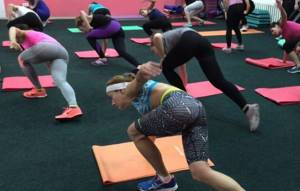
What is functional training?

Functional training is a physical discipline that uses multi-joint, full-body exercises similar to the movements of everyday life. Examples of functional training exercises include jumping jacks, pull-ups, and push-ups—as opposed to isolation exercises targeting a specific muscle group (biceps curls, dumbbell lateral raises, etc.)
Functional training includes both kettlebell training, calisthenics and crossfit, as well as other disciplines that involve training with body weight and/or free weights. The main advantage of functional training is the ability to perform exercises on the street or in almost any conditions - no exercise equipment or other bulky equipment is required.
Initially, functional training was used by professional athletes to improve performance in their primary sport and to develop certain physical skills. For example, discus and javelin throwers developed explosive strength, speed skaters and figure skaters developed a sense of balance. Nowadays, functional training is increasingly being used for regular fitness activities.
Key Functional Movements
The six main functional movements are squats, bends, presses, rows, rotations and movement in space. It is believed that each of the physical exercises (just like the movements of everyday life) is a combination of the listed characteristics, or the characteristic itself. Functional training aims to engage all six.
Note that basic exercises with a barbell can also be considered functional - they involve squats, presses and deadlifts. This is why it is difficult to separate functional training and conventional strength training - most often they use similar exercises. The key difference is the variability and emphasis on overall physical development rather than just muscle growth.
Cons and contraindications
If your goal is to build muscle mass, this training will not work. It makes the body strong, muscular, toned, but functional training in fitness does not provide relief and volume, as in strength sports and bodybuilding.
The training is aimed at all muscle groups, this is the strong and at the same time weak side of the training. In the process of functional training, athletic qualities are harmoniously developed, but without phenomenal results in strength, flexibility, and other individual indicators and components.
Additionally, some bodyweight exercises require at least a minimum of basic physical fitness to perform.
There are also contraindications to functional training:
- diseases of the heart and blood vessels;
- diseases and injuries of the spine;
- disorders of the central nervous system;
- kidney problems;
- acute injuries, instability of the musculoskeletal system;
- infections, acute inflammatory process;
- exacerbation of a chronic disease;
- pregnancy.
Minor health problems are not a contraindication to exercise. Any exercise can be adapted to the state of the body and the level of training, simply by reducing the number of circles and repetitions, adjusting the duration of rest and simplifying the technique (for example, push-ups from a chair or from a wall).
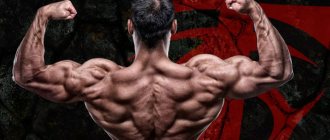

![Cardio training for burning fat at home [video selection]](https://activel.ru/wp-content/uploads/kardio-trening-dlya-szhiganiya-zhira-doma-video-podborka-330x140.jpg)

